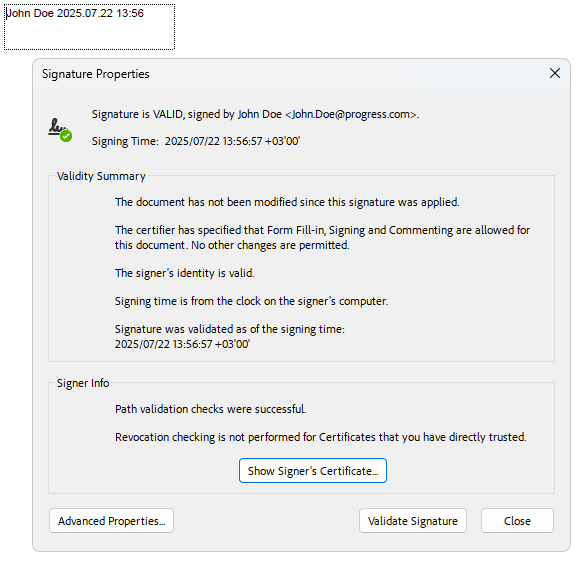What is Digital Signature?
The digital signature feature enables you to sign and validate a PDF document. A signature confirms that the document's content originated from the signer and has not been modified in any way. A signed document is considered valid when it has not been changed after the signing, and all of its certificates have a valid trusted root certificate.
The Digital Signature is part of Telerik Document Processing, a
professional grade .NET library for creating and manipulating PDF, Word, XLSX and HTML files. To try it out sign up for a free 30-day trial.
Telerik RadPdfProcessing provides an easy-to-use API that allows you to:
- Create a PDF document from scratch and add a signature field.
- Sign PDF documents that contain a predifined signature field.
- Verify existing signed PDF documents.
- Multiple Digital Signing with PdfStreamSigner.

Online Demos
| Demo | Description |
|---|---|
| PdfProcessing Digitally Sign Document | This example demonstrates how to digitally sign a PDF. |
| PdfProcessing Validate Digital Signature | This example demonstrates how to validate a digitally signed PDF. |
| PdfProcessing Multiple Digital Signatures | This example demonstrates how to digitally sign a PDF without invalidating any existing signatures. |
See Also
- Form
- Form Fields
- AcroForm
- SignatureField
- Signing a document with a digital signature
- Widgets Types
- How to Create Invisible Signatures for PDF Documents
- Signing a PDF Document with a SignatureWidget
- Verifying If Digital Signatures Exist in PDF Documents
- Signing an Unsigned PDF Document that Contains a Digital Signature with RadPdfProcessing